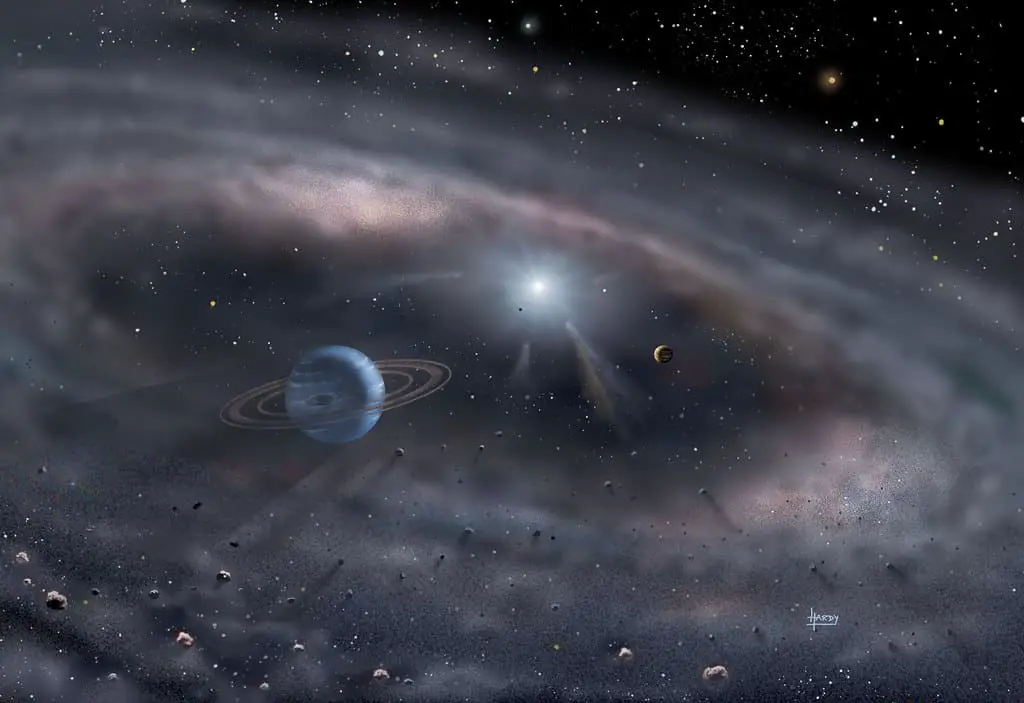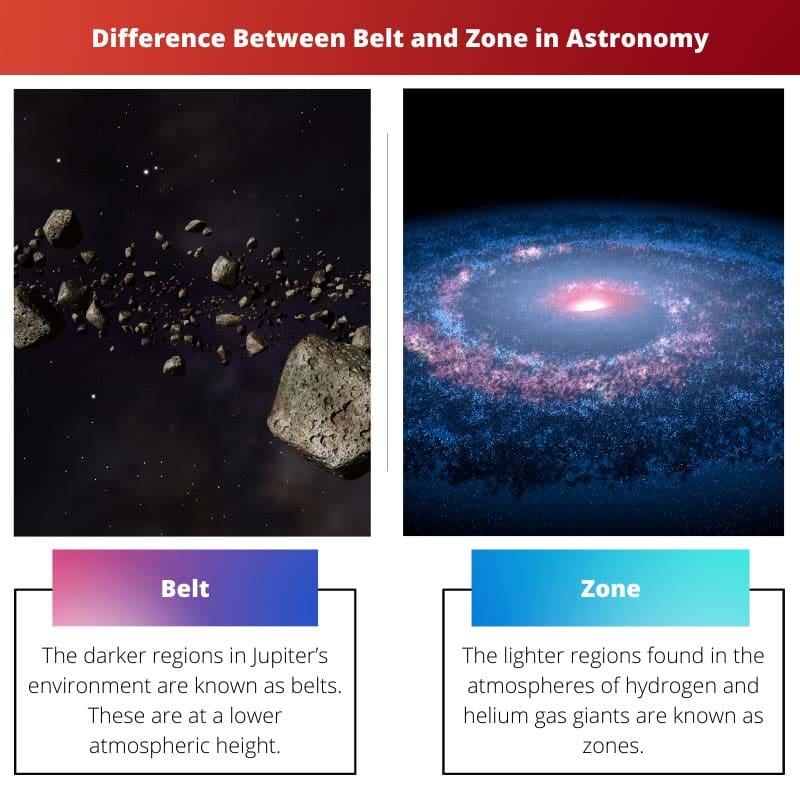Belt and Zone are two phrases linked with astronomy, and if you look closely, you’ll see that they’re distinct. Bands emerge in the atmospheric area of gas giants astral planets like Jupiter and Saturn due to radially revolving streams of material within the atmosphere. The darker bands are referred to as belts, while the lighter bands are referred to as zones.
The principles and fundamentals of a belt and zone in the field of astronomy are simple and easy to grasp, but if you want to fully learn and understand both concepts, read this whole essay that explains the distinctions between belts and zones.
Key Takeaways
- Belts are dark, cooler regions in gas giant planets like Jupiter and Saturn, while zones are lighter, warmer regions.
- Belts have high-pressure systems and tend to have downward-moving gas, while zones have low-pressure systems with upward-moving gas.
- Belts and zones create the banded appearance of giant gas planets and result from their rotation and atmospheric circulation patterns.
Belt vs Zone
A belt in astronomy is characterized by its dark-colored, low-pressure zone with slower winds, and is found closer to the equator of the planet. A zone in astronomy is characterized by its lighter-colored, high-pressure zone with faster winds, and is found farther from the equator.

In astronomy, a belt is a spiralling column of warm air that is linked to the atmospheres of giant gas planets. They’re noted for having a dark color and being expressive. They provide us with a better glimpse into the environment because they are denser and darker in color, and the darker a belt is, the deeper we penetrate into all of this. They are at a lower atmospheric height. They are low-pressure areas with an internal air stream.
The orbital area around a star can have water and ice on its surfaces and perhaps sustain life (similar to the habitable zone of a star). Because water vapour is necessary for all life on Earth, the notion of a zone existence is founded on the assumption that alien life will require it as well. They are classified as light in color in the easiest conceivable way, and with this fundamental quality, they do not provide us with a regular inspection into the atmosphere that a darker hue can normally provide.
Comparison Table
| Parameters of Comparison | Belt | Zone |
|---|---|---|
| Description | A belt is a spiraling column of warm air that is linked to the atmospheres of gas giants. | A zone is prone to storms and on the side closest to the poles, there is an eastern jet, while on the side closest to the equator, there is a westward jet. |
| Band Colors | The belts in a gas giant are dark in color. | The zones are light colored. |
| Temperature | Regions of low temperature and the air is heavy. | Regions of high temperature with cyclonic light-weighing air. |
| Air | Air pressure is very low and the air sinks. | The air in zones float and the pressure is high. |
| Examples | South temperate Belt in Jupiter, North Tropical Belt, North Equatorial Belt in Jupiter. | South temperate zone of Jupiter, Equatorial Zone, North Tropical Zone in Jupiter. |
What is Belt?
The darker regions in Jupiter’s environment are known as belts. These are at a lower atmospheric height. They have reduced areas with an inner air stream. The belts are analogous to the low-pressure bands in our Earth’s atmosphere and are also not limited to a single area. They are mid-latitude belts that encircle the globe. This might be related to the planet’s quick rotation. The belts can be found in the planet’s lower regions.
On the other hand, the ‘belts’ refer to areas in the solar system with individual independent orbits that maintain an equilibrium in the pressure-temperature ratio like the ‘asteroid belt’. The asteroid belt is a spherical shell area in the solar planetary system that lies approximately between Jupiter as well as Mars orbits. It is home to a large number of solid, irregularly shaped things known as asteroids or dwarf planets, which range from tiny to large but are significantly smaller than planetary systems.
As discussed earlier, the more prominent meaning of a belt is a spiralling column of hot air linked to gas giants’ atmospheres. They’re noted for having a dark color and being descriptive. They provide us with a closer glimpse into the atmosphere because they are denser, and the darker a band is, the deeper we penetrate into it.

What is Zone?
The lighter regions found in the atmospheres of hydrogen and helium gas giants are known as zones. They may be increased at different elevations and are high-pressure zones. In the zones, there is an interior air pocket.
They mimic the high-pressure zones that exist in the Upper orbit and play an important role in climate change and sometimes induce storms in that region. However, the zones, like the belts, encompass the whole globe. Zones can be found in the upper reaches of the planet’s atmosphere.
Most of us believe the zones seem brilliant because they are covered with high-altitude clouds made up mostly of colorless ice crystals. These formations are comparable to the famous cirrus cloud formation in Earth’s upper atmosphere; only Jupiter’s are more likely to involve ammonium ice rather than water ice. The topmost ice showers may be seen in the deeper belts at comparable altitudes but are considerably thinner.
When compared to the globe overall, the regions near the equator’s troposphere revolve more quicker. As you get closer to the poles, your speed slows down. As a result, the bandgap is lost as you get closer to the poles. That’s another reason why the colors of zones are lighter.

Main Differences Between Belt and Zone in Astronomy
- Belts are dark in color whereas zones are light in color.
- Belts are present on the downward half of the planet, whereas zones are present in the upper half.
- Belts have low air pressure, whereas zones have higher air pressure.
- Air is heavy in belts, whereas the air is lighter in zones.
- The belt regions are low in temperature, whereas the temperature is high in zones.




